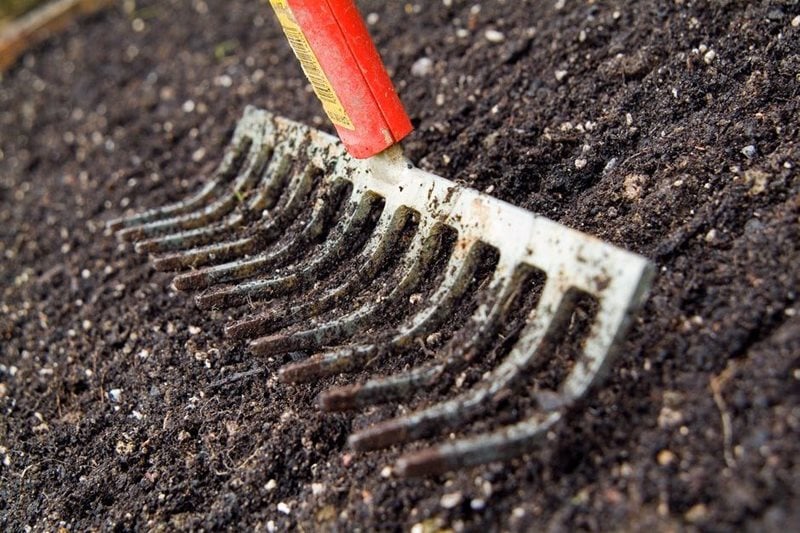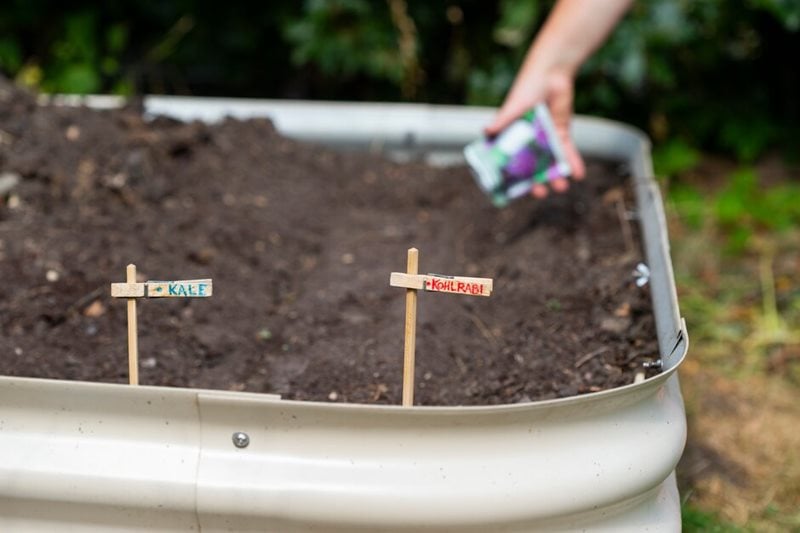How do you make sure your precious vegetable crops get off to the best start in life? RHS Chief Horticulturist Guy Barter shares his top tips

Vegetables are quite easy to grow – once they are ‘established’. Established means growing strongly, having survived the sowing and planting phases (both of which are very weather-dependent). I concentrate on four factors to ensure successful establishment:
1) Sort out your soil
Good soil condition is vital. Aim for a soil structure that is finely divided over firm but not compacted ground. Loosen it fully with a spade or fork, then tread over it and rake it so it’s level and fine.
For clay soils, which drain poorly and are slow to dry out, you could try creating a raised bed. The simplest form of a raised bed is where the soil in it is simply raked up from the ‘paths’ around it. You could also try the no-dig method of sowing seeds into compost that is spread on the soil surface. Pot- or cell-raised transplants are especially valuable for clay-soil gardens, although they cost more than seed.
It’s important to wait for the soil to dry out a little after winter rains, as seed mortality is high in wet soil. Consider hastening dry conditions by covering the soil with cloches or a clear plastic sheet before sowing seed.

2) Time it right
Sow early to make the best of the growing season. If an early-sown crop fails, you’ll have time to sow a second batch. Repeating a crop is necessary in most years – that’s the nature of vegetable growing.
►What seed size tells you about sowing time
3) Sow enough seed
Get the seed rate right. In any seed packet the percentage of viable seeds is never 100%. Sowing too few plants is a common mistake.
Carrots, for example, can be legally marketed with a germination percentage of just 65% and of those seeds that are viable some will rot or be eaten in the soil. Seed losses are generally high after a March sowing, but lighter following a June sowing when the soil is much warmer and emergence of the seedlings more rapid.
Use your judgement, sowing thickly where heavy losses are anticipated, although this risks tedious time-consuming thinning of excess plants later. For crops that can be transplanted as seedlings, such as beetroot or lettuce, I like to thickly sow a short length at the end of a row and use seedlings winkled out from thick clusters to close up the gaps.

4) Beware checks in growth
The British growing season is short, often finishing in September, and every day can count. Seedbed fertiliser gets seedlings swiftly away, but don’t overdo it – excess fertiliser can reduce germination. Hoeing as soon as seedlings become visible prevents competition from weeds. If you sow a few fast-emerging radish seeds in each row of slow-to-germinate crops, you’ll have a clear indicator of where the rows run. Adding extra warmth to the soil by using cloches or horticultural fleece can make a great difference to seedling growth in March and early April.
By mid-May plants largely look after themselves and should be on course for heavy crops.
An extra tip from Guy
Use two or more packets of different cultivars for each crop. If one seed packet fails the other should be satisfactory. Grow as many crops as you can for the best chance of getting a good crop, so for example, as well as lettuce, sow rocket, lamb’s lettuce and baby spinach alongside and at least one will crop well, whatever the weather.
 Pick of the crop
Pick of the crop
Look for the RHS Award of Garden Merit (AGM) when buying vegetable seed or small plants. You can also download the RHS lists of recommended cultivars.
See also

